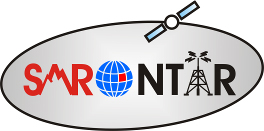
Objectives of the service
The scope and main objective of the demonstration project was to show the benefits of the provided services to relevant stakeholders. As such, the added value of space assets (satellite navigation and satellite communication) used in the solution were detailed and demonstrated. It targets successful integration of the pilot system into the daily routine of alpine rescue organisations. Therefore the system, based on prior research & development projects, was adapted according to user requirements for practical usage and the most adequate hardware currently on the market were implemented (e.g. outdoor smartphones).
Users and their needs
The user groups for the SARONTAR services are the alpine rescue organisations like mountain rescue services and alpine police in Austria. Furthermore, the national alerting and warning centres are users.
The mountain rescue services in each federal state are structured as follows: There are local units at the bottom that are grouped in regional units. These regional units in a federal state belong to one (federal) regional warning centre.
The pilot system is installed at the Styrian National Alerting and Warning Centre in Graz, Austria and utilised by the Mountain Rescue Service and Alpine Police in the alpine region of Liezen in the North of Styria.
Service/ system concept
Within the legacy system, there was no automatic continuous information transmission from the Mobile Terminals to the Mission Control Centre. Information on the team positions and the status on-site was requested via analogue radios. In certain regions, radios were not available and therefore the rescue team could not be located and the mission coordination was suffering. The exchange of up-to-date mission information provided by SARONTAR through stable communication links is a major benefit compared to the current situation.
Within the legacy system the mission controller received the initial mission information per phone call from the National Alerting and Warning Centre. Furthermore, the alert acknowledgements by the mountain rescuers were requested via telephone. A direct (data) communication link from National Alerting and Warning Centre to the mission control improves the situation significantly.
Furthermore, different systems regarding mission control were in use. SARONTAR unifies these systems and provides one single system for mission coordination and documentation.
Space Added Value
GNSS is used to determine the actual position of the search and rescue teams, the track they followed, and the position of important objects in the terrain.
The data transfer between mobile terminals and central server is performed by a hybrid communication link. Terrestrial GSM/GPRS networks are used primarily and are backed up by the satellite communication system.
The operation controllers equipped with this system are able to get a visual impression of the actual situation, in order to analyse the situation rapidly and to provide precise instructions to the search crews.
Current Status
The SARONTAR-supported trainings and mission performed in Styria confirmed the gaps in cellular network coverage. The mission controllers highly appreciated the live tracking of the rescue teams to maintain a clear overview of the situation and the simple way to exchange information to guide the teams and receive POIs without having to write down coordinates. Regarding acceptance of the whole system, all groups of ages of mountain rescuers included enthusiasts as well as sceptics depending on their technical experience. The major part easily accepted the MCC and MT, especially the smartphone and web browser. Only the SatCom elements raised a little reservation regarding their usage because they were completely new to the rescuers. At the moment, the commercial benefits of the system can only be estimated – a more comprehensive assessment will be possible once the system is in operation for a longer time and has proven its value in future missions.





